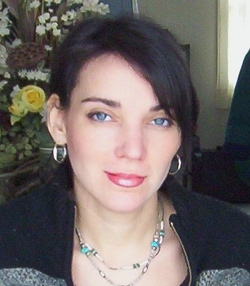MIT Director of Technical Communications Mya Poe Is Keynote Speaker
for Writing with Numbers Workshop at Colby-Sawyer College
NEW LONDON, N.H, May 12, 2008 – A Writing with Numbers Workshop at Colby-Sawyer College this week will feature a keynote address by Mya Poe, Ph.D., director of Technical Communication with the Massachusetts Institute of Technology's Writing and Humanistic Studies Program. The workshop on Thursday, May 15, and Friday, May 16, organized by the National Numeracy Network and Carleton College's Quantitative Inquiry, Reasoning and Knowledge (Quirk) Initiative, will allow educators to develop and share assignments that engage students in writing with numbers across fields of study.

The Writing with Numbers Workshop is part of the 12th annual Northeast Consortium on Quantitative Literacy (NECQL) on Saturday, May 17, an event for educators to explore strategies and practices for strengthening students' quantitative literacy skills. The conference is funded in part by a Colby-Sawyer College grant from the National Science Foundation for Quantitative Literacy Across the Curriculum in a Liberal Arts Setting. To learn about the workshop and NECQL conference, visit the Web site.
Dr. Poe's address, “Storyboarding with Data: Using Quantitative Reasoning to Teach Scientific Writing," will highlight current trends in writing-across-the-curriculum and the method used in a MIT quantitative physiology course called “storyboarding,” which illustrates the role of writing in scientific research. Her address will be delivered on Thursday, May 15, from 7:30 to 8:30 p.m. at Clements Hall in the Curtis L/ Ivey Science Center. Access the Workshop Schedule.
“Our goal in developing the storyboarding concept was to illustrate the role of writing in the scientific research process. Rather than describing research and writing as separate activities, storyboarding is a multi-step process that smoothly transitions from synthesizing research findings to report writing,” Dr. Poe says.
In the process of storyboarding, students first select the relevant data and construct figures that summarize the main findings of their research. After constructing the figures, students are asked to write bullet points about those figures. Those bullet points “map” onto the written content of the report, such as a student stating: “I want to say these three things about this figure, and I need to make sure that I explain how I got those three results in my methods.”
By developing a storyboard, students also focus on the relative importance of the information in each of the figures. This process leads to the next step, which is to refine the figures to focus on the major theme, or the “story” of the report. This goal of this step is to incorporate the interesting results into a logical and uniformly paced presentation of the research findings.
Used in this manner, the storyboard acts as the primary bridge between the research and writing efforts, according to Dr. Poe. “The storyboard becomes the technical outline for further work in drafting the manuscript and explicitly clarifies the research findings, often exposing problems or insights in the research,” she says. “We have found that integrating technical content and communication improves student learning by linking the scientific research process with the exposition of scientific findings, identifying high-level misunderstandings of technical content that are only obvious when students provide a written explanation of their research results, and providing students a forum for giving and receiving substantial feedback on their research writing.”
Dr. Poe is also one of the presenters at the NECQL conference, which will feature presentations and discussion led by faculty members in mathematics, psychology, technical communications, writing and other disciplines from Hollins University, Middlebury College, Massachusetts Institute of Technology (MIT), the University of South Florida and Carleton College. The presentations will address such topics as “Illuminating Arguments with the Power of Numbers,” “Making Time for it All: Integrating Writing, Speaking and Quantitative Reasoning in Disciplinary Courses,” “Quantitative Reasoning Using Case Studies from the News” and “The Published Numeracy Network.” Additionally, participants will present work from the Writing with Numbers Workshop.
Colby-Sawyer, founded in 1837, is a comprehensive liberal arts college located in the scenic Lake Sunapee Region of central New Hampshire. Students learn in small classes through a select array of programs that integrate the liberal arts and sciences with pre-professional experience.
Colby-Sawyer College, 541 Main Street, New London, N.H. 03257 (603) 526-3000


